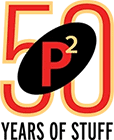Track and locate all of your files and important stuff. No matter what it is, you will never lose it again.
Tracking is important, because your assets and information are important. Quick access to files can boost productivity, accelerate decision making and improve customer service. Lost files or faulty information can create unacceptable risks, lost business and higher operating costs. Nothing slows down progress like missing information or assets. We have the fix for that. Barcode tracking or RFID tracking will ensure that your data is accurate and your information and assets are where you need them…when you need them. We can help you every step of the way, from software and hardware selection and implementation, to file and asset conversion services, to the supplies, labels and tags you’ll need to keep it all going. You can call off that search; your stuff is right where it’s supposed to be.
Request More Info
Please contact us to learn more and to start discussing how to make the best use of your space.
BARCODE TRACKING
Barcode labels (either separately, or as part of a color-coded label) are placed on folders, assets and other items to be tracked. A barcode reader is used to optically scan or wand the barcode and capture the data to send back to the tracking system, which in turn updates the location or status of that item. These items can be checked in, checked out, and relocated so you’ll always know where they are or who has them. Barcode tracking is easy to implement and provides a cost-effective solution for accurate tracking and data integrity.
RFID TRACKING
Short for Radio-Frequency Identification, RFID can consist of several components: the tag, reader, antenna and the tracking software. The RFID tag works in much the same way as a barcode, but it can store more identification data, and that data can be updated as needed. Because it works on radio frequency, RFID offers several advantages over barcoding: the reader does not need to “see” the tag to scan it, the distance between reader and tag can be greater (up to 40 feet), the tag doesn’t need to be on the surface of the item – meaning less wear-and-tear, the data is read much faster (up to 10 times faster than barcodes), and multiple tags can be read at the same time. RFID tags can be placed on files, equipment, weapons, and other stuff you need to track and inventory. All the data stored on an RFID tag stays with item through a supply chain or other business process, giving you access to real-time status, inventory and location updates.


